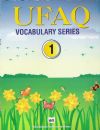|
ESL Forum:
Techniques and methods
in Language Teaching
Games, activities
and teaching ideas
Grammar and
Linguistics
Teaching material
Concerning
worksheets
Concerning
powerpoints
Concerning online
exercises
Make suggestions,
report errors
Ask for help
Message board
|
ESL forum >
Games, activities and teaching ideas > Schools in other countries
Schools in other countries
|
|

saratbl

|
Sorry! I never thought to post my own information. Thanks for the question aboabed3.
In Japan:
1. Public elementary schools (from age six), junior high schools (from age 13) and high schools (from age 15) are free. Private schools are not free.
2. Elementary students in my area do not wear uniforms but they all have to wear red or white caps so they are easily identifiable. I think in more urban areas elementary students may also wear uniforms. Junior high and high school students all wear uniforms.
3. In elementary and junior high schools the students � parents pay for school lunch which is prepared by the school. In high school the students bring lunch boxes from home.
4. Compulsory education ends at the end of junior high (age 15) but almost all students (I think 80%?) continue to high school.
5. The school year starts in early April and ends in late March.
6. The school day starts at 8:20 and classes usually end around 3:30 for high school students. Most students stay at school until about 5 or 6pm for extramural activities though. I am not sure about the times for junior and elementary school but I think junior high school is similar to high school and elementary school ends a bit earlier.
7. It depends on the area but in my high school there are about 40 students per class. However in most areas classes have been getting gradually smaller and many schools have had to close because there are not enough students. Elementary and junior high schools in rural areas can have very small classes, like 5 students. Japan �s ageing population problem is quite visible in the school systems.
|
18 May 2011
|
|
|

jamiejules

|
|
Thank you for a very interesting topic!
in France:
1. in state school students do NOT pay school fees (they do in private schools)
2. Students don �t wear uniforms at school
3. it depends where they live: if they take the school bus they then eat at the school canteen, if they walk to school they then go back home for their lunch.Kids do not bring their own lunch at school.
4. Education is compulsory up till 16 (if they turn 16 in the middle of a school year they have to finish the year)
5.The school year starts in September (next school year: Septamber the fifth) however this is only for "mainland" France the school year calendar is different in The island of the reunion for instance. It ends at the very beginning of July.
6. The school starts between 8 and 8:30 depending on the school and finishes beween 4 and 6.
7. in an average school each will have between 25 and 30 students (secondary) and up to 36 in high schools. However some school (in poor areas) have a "priority education label" and therefore a class will only have between 18 and 25 kids (that �s the case at my school)
have a nice day.
|
18 May 2011
|
|
|

dawnmain

|
I would like to add some things about Spanish schools:
State schools are free but �concertados � (of which there are many) are privately owned schools which receive some state funding allowing elegible students to attend for a relatively low cost - perhaps 150 euros a month.
Most concertados and private schools have a school uniform.
Concertados also tend to have a longer day - often finishing at 5 or 6pm, and students tend to eat at the school.
In most areas children have to pay for their own books, which, although grants are available for low income families, can be 200 euros a year for primary and a lot more for secondary and tertiary.
In Galicia, in the north west, most state schools start at finish at 2.30, and primary kids more often than not have lunch at school.
One interesting point is the languages taught - here Galician language is an obligatory subject and most schools give 50% of the other subjects in Galician rather than in Castillian Spanish. English is obligatory from 3 years old. So, even infants are studying 3 languages and at 11 years old they also have French. This is true for other areas of Spain too, eg. Catalunya.
|
18 May 2011
|
|
|

saratbl

|
maybe I should add that high schools that prepare students for university have a longer school day and often have classes in the early morning too. Those students might have lessons from 7:30 to 5:00. Many students who want to go to university also attend extra night classes at cram school that can finish as late as ten pm.
|
18 May 2011
|
|
|

tulpen25

|
|
The Netherlands.
1. Students do not pay fees.
2. Students do not wear uniforms.
3. Most primary children cycle home for lunch. In secondary school more children eat sandwiches in school but some also go home.
4. 18
5. End of August/September-end of June/July.
6. Varies: usually 8.45 - 3.15 (later for secondary schools)
7. Varies. Classes I �ve been in usually have around 25.
Extra info:
There are 3 types of secondary school education (more info can be found on Google): VMBO (4 years), HAVO (5 years), VWO (6 years). |
18 May 2011
|
|
|

laura crespillo

|
1. They pay just materials.
2. They only wear uniforms in semi-private or private schools.
3. In primary most of them go home for lunch but they have the possibility of having lunch there depending on the proximity of the school/home. In secondary, 2 days of the week students have very few time to eat but still some of them gohome to eat, others eat in the school.
4. compulsory education ends at 16.
5. Beginning September / June approximately 22.
6. In Spain it depends on the region. In many schools in the South children in primary do not go to school in the afternoon as a parter has said they finnish at 2 or 3 depending on the school. In Catalonia ( I � m from Barcelona, Catalonia) children also go to primary school in the afternoons: (9-1, and from 3-5). High school; they only have classes in teh afternoon twice a week.
7. 30!
I hope it is useful! I also want to add that there are some issues that perhaps will change in some years. The debate has started for changing some things such as if it would be a good idea to have compulsory education till 18 years old. This year, it is the first year that primary/ secondary schools had a " white week-holydays one week in March, and due to the complaints of parents and public sector...we are not going to do it again!
|
18 May 2011
|
|
|

graceoli

|
. Do students pay school fees?
2. Do students wear uniforms?
3. Do students buy lunch at school or bring lunch from home?
4. When does compulsory education end?
5. When does the school year start and end?
6. What time does the school day start and end?
7. How many students are there in each class (average)?
and any other interesting facts you would like to share! :)
Hi there, here �s some information about Portugal:
Our state schools are free, but we do have several private schools where students pay for everything. In state schools students don �t use an uniform, but in some of the private schools, students must wear it. As far as lunch is concerned, in general, students have lunch in the school canteen, just a few bring in their lunch, they think it �s not cool!!! Poorer students have their lunch paid by the government but the rest don �t. Portuguese students have to stay in school till they �re 18 years old ( a new law has just came out on this topic ). The schoolyear usually starts in the middle of September ( on the second monday of September) and ends at the end of June for elementary students.Secondary students finish early,by the beginning of June because they have to prepare themselves for the national exams.( those who will try go to the university ).An ordinary schoolday starts ( in my school) at half past eight and ends at a quarter to five. The average number of students per class is 20/ 22. |
18 May 2011
|
|
|

asmajabbar

|
|
Hi! I am from Pakistan and we have two types of schools. 1. State Schools ( Government run) & Private Sector school. 1. Do students pay school fees?Private sector schools students pay fees and varies according to the slandered of the school & State own school have very low fees structure.
2. Do students wear uniforms? Yes, all the students wear different uniforms. Each school has own uniform.
3. Do students buy lunch at school or bring lunch from home? Most of the schools have canteens but where I work (we have 12 branches) do not have canteen & children bring health lunch made by their mothers.
4. When does compulsory education end? Elementary.
5. When does the school year start and end? Between 1st April to 10th April
6. What time does the school day start and end? From 8:00 am to 1:30 pm
7. How many students are there in each class (average)?
In secondary Classes VI to X 40 students & 1 to V 35 students. |
18 May 2011
|
|
|

lizsantiago

|
1.Do students pay school fees? public education no, private yes
2. Do students wear uniforms? yes
3. Do students buy lunch at school or bring lunch from home? public no, private some yes
4. When does compulsory education end? 18
5. When does the school year start and end? 1 august- may31
6. What time does the school day start and end? 8a-3p
7. How many students are there in each class (average)? public average 25-40
|
18 May 2011
|
|
|

edrodmedina

|
|
It would be difficult to answer these questions for all schools in the US as city by city the answers might be different and even between grades. Even in the city I work in there are different entering times not just between grades (elemntary, middle and hgh school) but also within elementary schools in the same city depending on a number of factors. I can only,then, tell you about my school in Hartford Connecticut.
1.Fees- no, it �s a public school (trips and extra curricular activities and so forth would be paid by students though, unless the school has set money aside for that).
2. Uniforms-yes..for the last 5 or so years that was implemented to ease the clothes competition and to try and establish school pride
3.Lunch...Our district is poor so all students receive free lunch although any child who wishes may bring lunch from home
4. Compulsory ed ends at 16 although special needs students may attend until 21
5. In my city the school year begins at the end of August and ends in the beginning of June
6.Our school starts at 7:35 for teachers and 7:45 for students it ends at &:55 for students and 3:05 for teachers
7.The average number of students is approximately 23 (by contract 23 is the max grades 1-3 and 27 grades 4-6)
All the surrounding towns and cities set up their own school calendars and dress codes. |
18 May 2011
|
|
< Previous
1
2
3
4
Next >
|


















